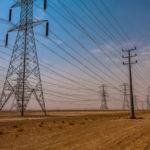تُمثِّل موارد الطاقة المُوَزَّعة (DERs) عنصرًا حاسمًا في إستراتيجيات إزالة الكربون من قطاع الكهرباء. ومع تراجع تكاليف الألواح الشمسية والمَركبات الكهربائية، ستضم أنظمة التوزيع عددًا متزايدًا من موارد الطاقة المُوَزَّعة. ويتطلب التنفيذ الناجح تحديد كمية وأنواع موارد الطاقة المُوَزَّعة التي يمكن تثبيتها بطريقة آمنة وموثوقة في موقع معين داخل أحد أنظمة التوزيع. ونقدم أداةً قادرة على احتساب كمية موارد الطاقة المُوَزَّعة التي يمكن أن يتعامل معها نظام التوزيع دون ترقيات. كما يمكن أن تساعد هذه الأداة في تقييم الترقيات التي يمكن تثبيتها في الشبكة من أجل استضافة المزيد من موارد الطاقة المُوَزَّعة.

محلل- خدمات الطاقة والطاقة المتجددة
محلل في برنامج خدمات الطاقة والطاقة المتجددة في كابسارك. وهو مهندس طاقة كهربائية وآلات، حاصل على درجة البكالوريوس من قسم…
محلل في برنامج خدمات الطاقة والطاقة المتجددة في كابسارك. وهو مهندس طاقة كهربائية وآلات، حاصل على درجة البكالوريوس من قسم الهندسة الكهربائية بجامعة الملك عبد العزيز. ينصب عمله في كابسارك على مصادر الطاقة المتجددة، ونمذجة الطاقة، ومجال أنظمة الطاقة الكهربائية.
الخبرات
- نمذجة الطاقة، وأنظمة الطاقة الكهربائية، والطاقة المتجددة
الإصدارات عرض جميع الإصدارات خالد الحضرمي
Which Bioenergy with Carbon Capture and Storage (BECCS) Pathways Can Provide Net-negative Emissions?
تُمثِّل موارد الطاقة المُوَزَّعة (DERs) عنصرًا حاسمًا في إستراتيجيات إزالة الكربون من قطاع الكهرباء. ومع…
1st يونيو 2024Modeling Green Hydrogen Production Using power-to-x: Saudi and German Contexts
تُمثِّل موارد الطاقة المُوَزَّعة (DERs) عنصرًا حاسمًا في إستراتيجيات إزالة الكربون من قطاع الكهرباء. ومع…
25th أبريل 2024
